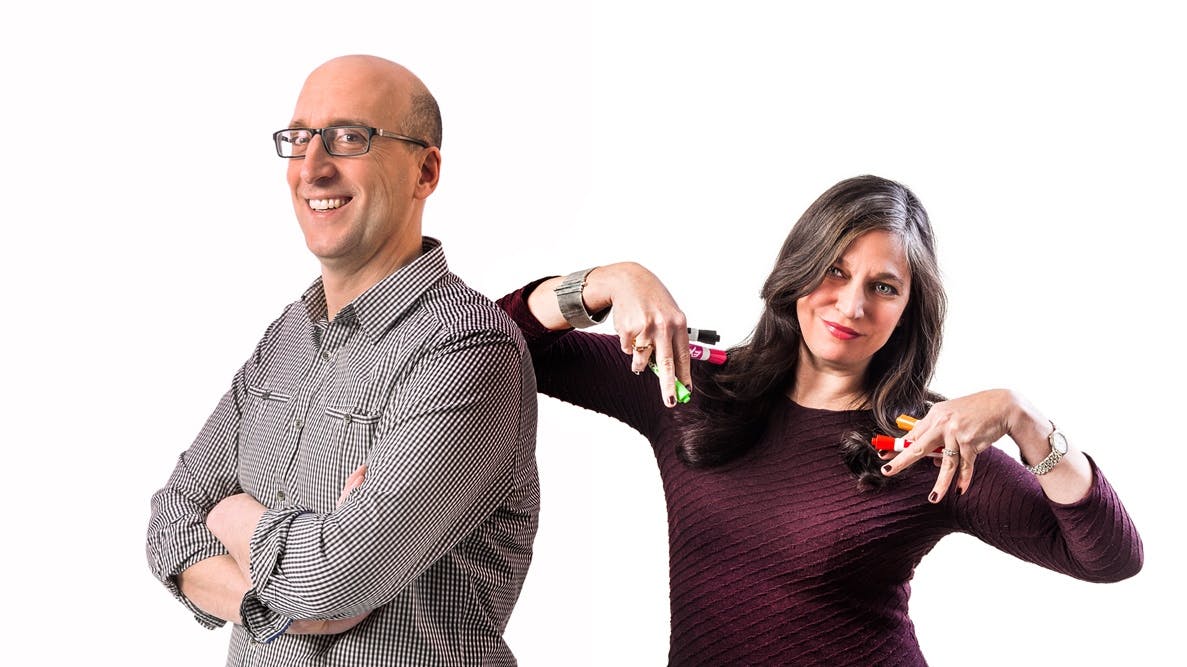Confessions of a (former) tribal warrior
I have a confession to make. My co-worker Stefanie used to drive me nuts.
Confessions of a (former) tribal warrior
OK, as long as I’m being honest, while that’s technically accurate it’s not entirely past tense. My co-worker Stefanie still occasionally drives me nuts. But – and here’s a really important distinction – nowhere near as much as she used to. More about that in a bit.
I know what you’re thinking. Coworkers who drive each other nuts are hardly rare. And hardly blog-worthy. But here’s the thing. What drove me nuts about Stefanie – and what drove her nuts about me – is rooted in a personal and organizational dysfunction that’s so common as to be cliché and almost laughable. Almost – if it weren’t so deeply toxic, damaging and dangerous. Dangerous to firms that are trying to innovate, damaging to teams, and toxic to people, their careers, and their sense of wellbeing.
You see, Stef and I hail from entirely different tribes. I come from the Research and Development tribe. Talk about a cliché. I’m an engineer. My dad was an engineer. My grandfather ran a mechanical contracting firm. I love math and science and spreadsheets and gears and fast cars.
Stef? Well, her tribe hails from design strategy. Her work can be most closely aligned with Marketing. Her background is in the social sciences and the arts. She loves food and culture and psychology and figuring out what makes people tick. And I haven’t noticed any particular affinity for gears.
Ironically, if I’m being honest again, I’m not really an engineer anymore. Stef and I have risen to places in our organization and our careers where our day-to-day jobs share a remarkable amount of similarity. We grapple with many of the same strategic, financial, organizational and personnel decisions. We’ve shared 15 years of common experiences. We run what is, by all accounts, a successful design and innovation firm. By now, you’d think we’d have easily arrived at working detente. And we have. But it certainly wasn’t easy. It’s taken a long time, been occasionally painful, and involved a lot of learning.
You see, the traits of our tribes run deep. Very deep. In many ways, these traits were present in us from birth. They probably influenced the friends we made, the hobbies we chose, the schools we attended, the classes we took, the careers we pursued. Beyond that, these traits were further reinforced. Hammered into us subtly, slowly, painstakingly over years of education and indoctrination by other members of our tribe. And they’re so core to who we are as people that certain aspects of them will always be there, lurking.
So, when Stef and I found ourselves at the same company on different sides of the innovation spectrum we were already loaded for bear, so to speak.
You’d think it would have been easier to find common ground. We both had the same objectives. We shared some obviously common goals. There was plenty of motivation to make it work. Beyond that, Stef is kind, funny, articulate, smart and hard working. Easy to say now, but in all candor, it took me an embarrassingly long time to grudgingly acknowledge the last two traits. Mind you I never thought Stef was dumb – it’s just that she had such a fundamentally different way of looking at problems – a thought process that was so unrecognizable to me that I found it impossible to relate to her way of processing information and solving problems.
Likewise, Stef and her team’s “hard work” manifested in work styles that certainly didn’t look familiar to my tribe. But here’s the thing. Time after time, Stef’s thought process brought us to a better place. She’d suggest solutions that just made me blink in admiration. Her work style led us to new tools and methods. And as much as I had kept hoping that I’d convert Stef to my way of thinking and working, I found Stef and her thought processes rubbing off on me. And if I’m completely honest again, we’d be a shadow of the company we are today if it weren’t for Stef and her tribe.
So why should this matter to you? Well, like I said, Stef and I are hardly unique. In many ways Stef and I are a perfect metaphor for the clash between the R&D and Marketing tribes. For the 15 years that Stef and I learned to work together, we’ve watched literally hundreds of companies of all sizes and all stages struggle and implode with really damaging dysfunction on these exact same fault lines.
And while organizational dysfunction is just as common as personal conflict, the conflict between the technical part of an organization, responsible for executing the nuts and bolts of innovation, and the customer-facing part of an organization, responsible for connecting with users and their needs, remains one of the most fundamental challenges facing firms as they seek to be innovative. Get it right and your company can run rings around your competition, make a ton of money, and be a great place to work. Get it wrong and trust me, you’ll become an irrelevant toxic stew.
So, we’ve decided to write a book. It was Stef’s suggestion. No surprise there. It would never have occurred to me. I’ve never written a book before and I bet it’s not going to be easy. I’m guessing Stef’s got a completely different approach – you know, that whole tribe thing. But I’m positive that it’s going to be a lot better than it would ever have been if I’d tried to do it myself.
So, stay tuned – over the coming months we plan on sharing some thoughts, observations, research and recommendations on what makes highly effective organizations “tick.” Who knows, it might help you be more innovative, and run a more effective company. Or maybe even keep you from driving your coworkers crazy.
